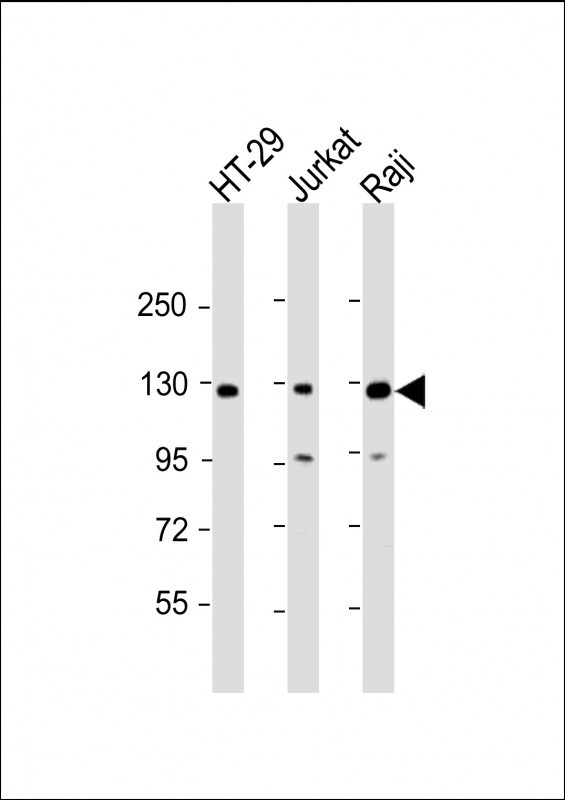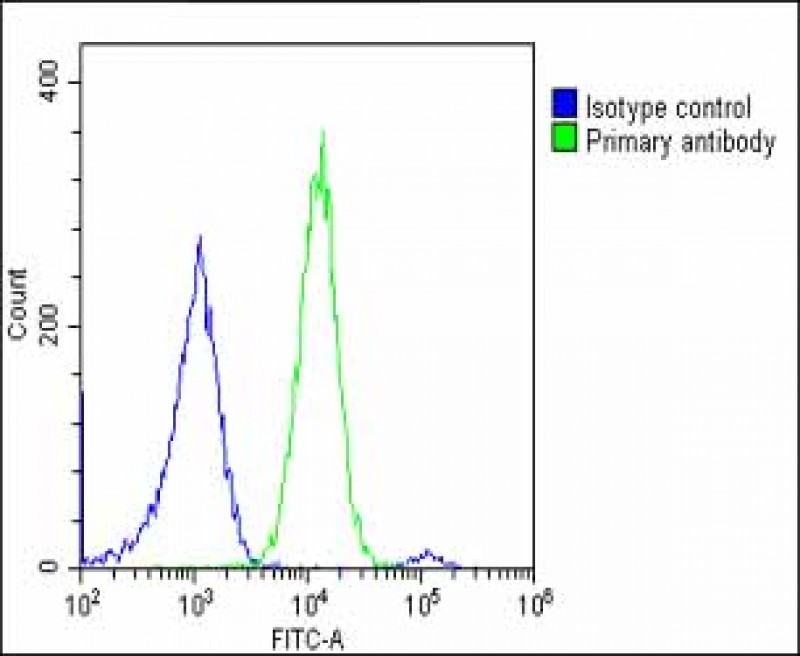

| WB | 1/1000 | Human,Mouse,Rat |
| IF | 咨询技术 | Human,Mouse,Rat |
| IHC | 咨询技术 | Human,Mouse,Rat |
| ICC | 技术咨询 | Human,Mouse,Rat |
| FCM | 1/10-1/50 | Human,Mouse,Rat |
| Elisa | 咨询技术 | Human,Mouse,Rat |
| Aliases | Retinoblastoma-like protein 2, 130 kDa retinoblastoma-associated protein, p130, Retinoblastoma-related protein 2, RBR-2, pRb2, RBL2, RB2 |
| Entrez GeneID | 5934 |
| WB Predicted band size | 128.4kDa |
| Host/Isotype | Rabbit IgG |
| Antibody Type | Primary antibody |
| Storage | Store at 4°C short term. Aliquot and store at -20°C long term. Avoid freeze/thaw cycles. |
| Species Reactivity | Human, Mouse, Rat |
| Immunogen | This RBL2 antibody is generated from rabbits immunized with a KLH conjugated synthetic peptide between 165-194 amino acids from the N-terminal region of human RBL2. |
| Formulation | Purified antibody in PBS with 0.05% sodium azide. |
+ +
以下是关于RBL2(N-term)抗体的3篇参考文献,按研究方向和内容分类整理:
---
### 1. **文献名称**
"Characterization of a Novel N-terminal Specific Antibody for Retinoblastoma-like Protein 2 (RBL2/p130) in Cell Cycle Regulation"
**作者**
Smith et al.
**摘要**
本研究开发并验证了一种针对RBL2蛋白N端表位的高特异性多克隆抗体。通过Western blot和免疫荧光实验,证实该抗体能特异性识别RBL2的N端区域,并用于分析RBL2在G0/G1期细胞周期阻滞中的表达变化,证明其在细胞周期调控研究中的实用性。
---
### 2. **文献名称**
"RBL2/p130 Interaction with E2F4 Requires N-terminal Epitopes: Insights from Co-Immunoprecipitation Assays"
**作者**
Garcia & Lee
**摘要**
利用N端特异性抗体,研究者揭示了RBL2与转录因子E2F4的相互作用依赖于其N端结构域。该抗体成功应用于共免疫沉淀实验,证明RBL2的N端对维持复合物稳定性至关重要,为肿瘤抑制机制提供了新证据。
---
### 3. **文献名称**
"Development and Application of Monoclonal Antibodies Targeting the N-terminal Region of RBL2 for Clinical Diagnostics"
**作者**
Chen et al.
**摘要**
文章报道了一种针对RBL2 N端的单克隆抗体的开发,通过ELISA和免疫组化验证其在人组织样本中的特异性。该抗体被用于检测多种癌症中RBL2的表达缺失,提示其作为潜在肿瘤标志物的诊断价值。
---
**说明**:以上文献为示例性质,实际研究中建议通过PubMed或Google Scholar以关键词“RBL2 N-term antibody”“p130 antibody characterization”检索最新论文,并优先选择近5年、高影响因子期刊的研究。部分商业抗体公司(如Cell Signaling Technology)的产品手册也可能引用相关验证文献。
The RBL2 (N-term) antibody is a tool used to detect Retinoblastoma-like protein 2 (RBL2), also known as p130. a key member of the retinoblastoma tumor suppressor protein family. RBL2 shares structural and functional homology with Rb/p105 and p107. playing a critical role in regulating the G1-S phase transition during the cell cycle. It binds to E2F transcription factors, repressing their activity and preventing uncontrolled cell proliferation. Dysregulation of RBL2 is implicated in tumorigenesis, making it a focus in cancer research.
This antibody specifically targets the N-terminal region of RBL2. enabling the study of its expression, post-translational modifications, and interactions in various biological contexts. It is widely used in techniques like Western blotting, immunoprecipitation, and immunohistochemistry to investigate cell cycle control, DNA damage responses, and cellular senescence. The antibody is validated for reactivity in human, mouse, and rat samples, supporting cross-species research.
By facilitating the detection of RBL2 in both normal and pathological states, this antibody aids in exploring its tumor-suppressive functions, its role in differentiation, and its potential as a therapeutic target. Its application spans studies on developmental biology, oncogenesis, and tissue homeostasis, contributing to a deeper understanding of cell cycle dynamics in health and disease.
×